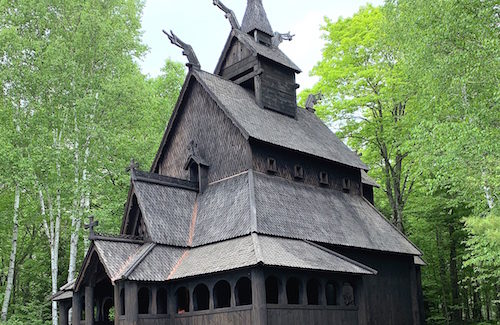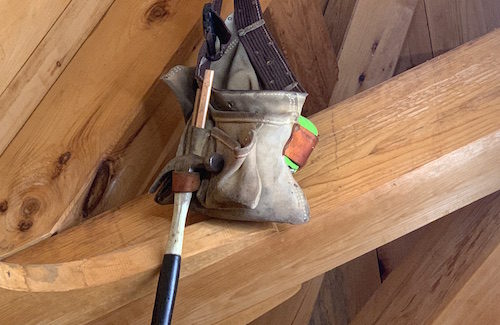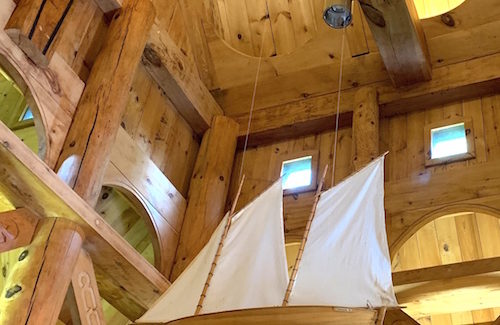Visiting Washington Island: Church Recalls Viking Heritage
Hanging from the rafters of this unusual church is a well-worn tool belt. In the left pocket of the tool belt is a candy wrapper.
“This church tells you more about our island than any other place on the island,” said a tour guide.
Of course, the tool belt tells a great deal about this isolated place, too, and the people who choose to live here.
Located 6 miles off the tip of the Door County Peninsula, 22-square-mile Washington Island in Wisconsin has a permanent population of about 660.
“There’s an old saying that if it doesn’t fit on a boat, it doesn’t come over to Washington Island,” the guide said.
The Potawatomi Indians made their home on the island, which provided them ideal protection against enemies. Early explorers such as Jean Nicolet in 1635 came to the area followed by traders and missionaries. On June 20, 1850, the town of Washington was founded.
A short ferry ride from the mainland, the island is well known for its tranquility and relaxing pace of life. It’s a popular tourist spot in the summer.
The neighborly feeling of the islanders is one of the reasons residents choose to call it home. That pitch-in-and-help-each-other-out attitude is how the church got built. And the man whose tool belt is displayed at the church was one of those beloved volunteers.
“That tool belt belonged to Dale Bjarnarson,” the guide said. “He worked almost every day on this church but he never lived to see it finished.”
Bjarnarson died April 3, 1995. The church was dedicated as a Christian house of worship in August of 1995.
Started in October of 1991 by local carpenters with largely volunteer labor, the “Stavkirke” (stave church) is open daily as a place for spiritual mediation and worship.
It is patterned after the ancient style of church construction that was common in Norway during medieval times. The word “Stavkirke” refers to the use of vertical poles. The church has 12 center staves or masts.
About 1,000 stave churches were constructed in Norway between the years 1000 and 1350. Only 22 exist today. The ancient style of construction was common at a time when paganism was giving way to Christianity. The Washington Island stavkirke is patterned after the Borgund, Norway, church built in 1150 A.D.
WALKING A WINDING PATH
To reach the Washington Island Stavkirke, visitors walk a winding path through the woods to prepare for a spiritual experience. Benches, Bible verses and flowers are scattered along the path. The pine chapel seems to rise out of the trees and looks like a Viking ship. Four fierce dragons protect from the ridge poles of the church’s tiered roofs. A dove of peace rises from the top.
“The church is built the old-fashioned way,” the guide said. “It’s all notched. No nails or screws hold it together.”
Suspended from the rafter is a model of a mackinaw schooner, a sailing vessel popular for fishing and transporting good across the lake in the 1800s. The model was handcrafted as a memorial by John Herschberger from cedar net buoys used by island fisherman Carl Richter in the 1920s.
Thirteen clear glass windows on the north and south walls near the roof provide natural light in the church. One stained glass window adds soft rays of color.
“The fellow who made that was very patient,” the guide said. “He watched the sunset for years and fixed the window just right so that the beams of light come through that window, move right up the aisle and at sunset the light is on the cross.”
The importance of the candy wrapper in the tool belt is now part of island legend. Bjarnarson loved jelly beans, especially black ones. He gave the other colored candies to children who came to church on Sunday.
Sometimes, as many as six volunteers would be working on the project at one time. Other times, it might be one solitary worker.
But Bjarnarson always said, “We never feel alone.”
Photos and story by Jackie Sheckler Finch

















View Recent Comments